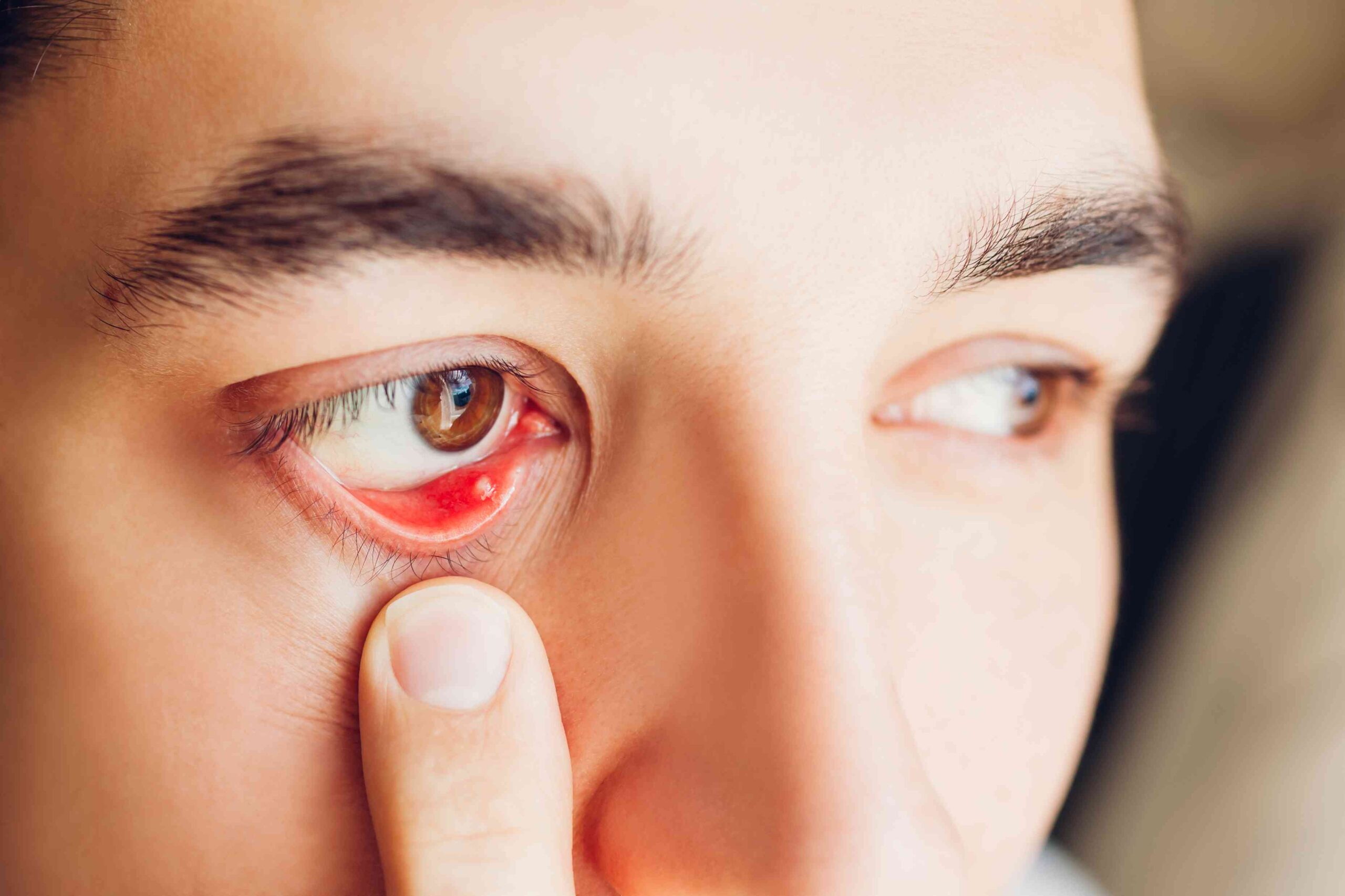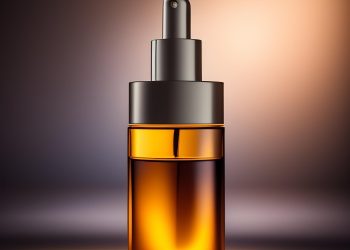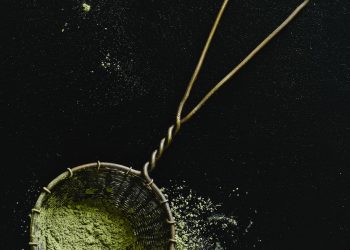A stye is a lump on your eyelid. This is a minor condition that causes pain and discomfort. Additionally, it can also cause red and watery eyes [1].
There are two types of styes. They are external stye and internal stye. As the name suggests, the external stye appears outside the eyelid, while the internal stye appears on the inside. It grows on the inside of the eyelid and is much more painful [1].
The most frequent cause is an infection of Staphylococcus aureus bacteria, which are commonly found on the surface of the skin [2].
In most cases, the swelling of the eyelid lump lasts for up to three days before it pops out and drains [3].
It may cause the vision to blur a little, but it’s good to know that it usually doesn’t leave any permanent damage [2].
Now, even though it’s not a serious infection, you would still want to get relief from the uneasiness that it causes.
There are some simple home remedies for a stye that can naturally treat the condition and soothe the symptoms to a great extent.
Home remedies make use of natural ingredients and herbs that have potent therapeutic effects. This article reviews some evidence-based and safe natural cures for stye.
19 Natural Remedies for Eye Styes Treatment
1. Warm Compress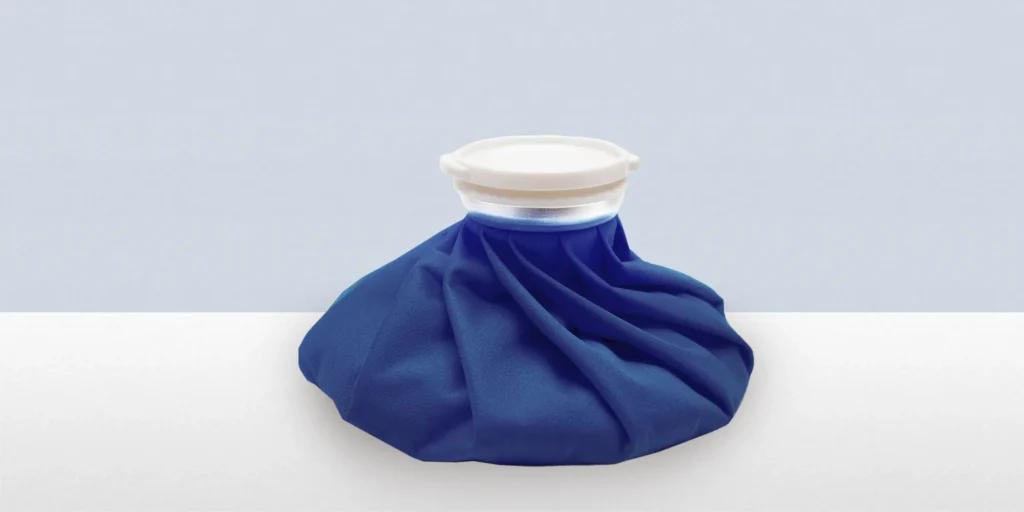
A warm compress gives relief from a lot of things. In the case of styes, they can surely help. In fact, the use of a warm compress to treat stye is an ancient practice. It is because warm compress has been “universally employed in the treatment of various conditions of the eyes” [4].
Researchers explain that heat has a two-fold effect on eye conditions: analgesic and therapeutic.
As an analgesic, it tones down the pain caused by the inflammation. As a therapeutic, it helps heal the infected site [4].
It also acts as a vasodilator that increases blood flow to the inflamed tissue on the eyelid not only to bring comfort but also to speed up recovery [4].
It is often recommended as an initial treatment for the stye to facilitate drainage of pus [5, 6].
Despite its many benefits, experts say that more randomized controlled trials are needed to confirm its efficacy and safety [5, 6].
How to use a warm compress for eye stye:
- Boil water in a pot.
- Soak a clean towel in the water.
- Wring out to get rid of excess water.
- Close your eyes.
- Gently press a warm towel on the eyelid with a stye.
- Leave it on for five minutes.
- Take a break for a few seconds.
- And then put it back again.
- Repeat remedy three to four times a day until the stye is drained out.
2. Green Tea
One of the world’s most popular beverages is tea, an infusion of leaves from an evergreen shrub called Camellia sinensis [7].
Green tea has many benefits for health, which include the treatment of eyelid inflammation such as styes.
It works by reducing inflammation and combating the bacteria that cause it.
Its inhibitory effects against Staphylococcus aureus have been well established in the scientific literature [7, 8, 9].
Its anti-inflammatory properties, meanwhile, can be attributed to its ability to reduce oxidative stress and disrupt the activities of pro-inflammatory enzymes [10, 11].
Recommended directions for using green tea for eye stye:
- Dip the bag of green tea in water for three to five minutes.
- Squeeze the bag a little to remove excess water.
- Close your eyes.
- Place a tea bag on top of the painful eyelid.
- Wait for five minutes before removing the teabag.
- Put it back in the warm water, and then re-apply.
- Do this several times a day until stye disappears.
RELATED: Green Tea for Acne: How Effective?
3. Turmeric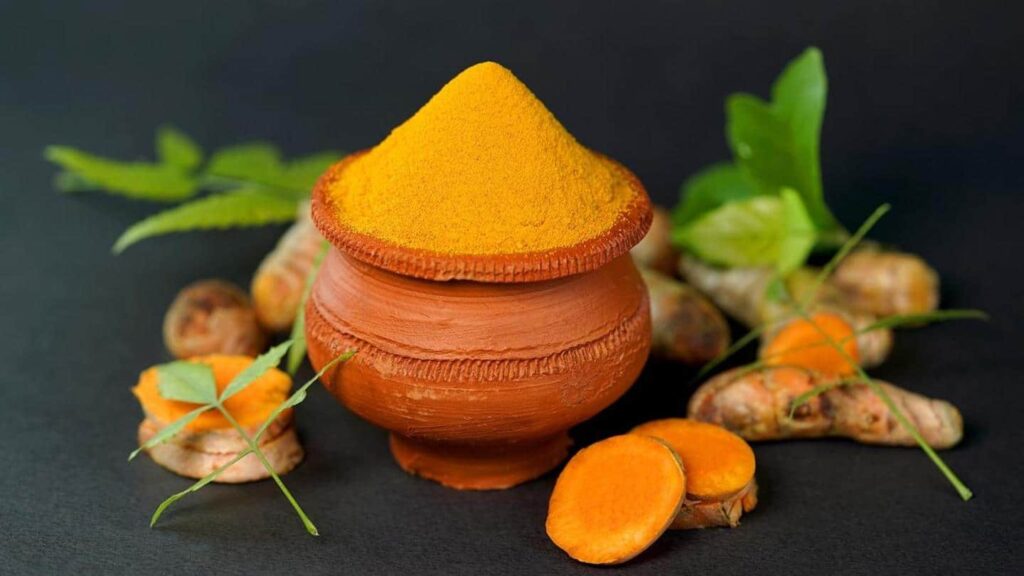
Turmeric belongs to the same family as ginger. It has been widely recognized in Ayurvedic medicine for its pharmacological properties. Turmeric can be used in multiple ways. These include utilizing it topically, ingested orally, or inhaled as steam [12].
How many times have you heard turmeric being hailed as a potent healer of inflammation, irritation, and many other health issues? Not just once or twice, but countless times, right?
In a series of experiments conducted at the University of California in the United States, it was reported that turmeric’s main compound curcumin demonstrated anti-inflammatory effects [12].
It works by inhibiting various molecules that trigger this process [12].
Other studies echo these findings, confirming the efficacy of turmeric as an anti-inflammatory [13, 14, 15].
Its oil extract has also been found to be effective in controlling the infection-causing Staphylococcus aureus [16].
How to use turmeric for stye relief:
- Stir a tablespoon of turmeric powder in water.
- Boil the solution until it is reduced to half.
- Add a drop of turmeric oil.
- Let it cool.
- Strain the mixture through a cheesecloth.
- Wash the affected eyelid with this solution three times a day for four to five days.
- Add a teaspoon of turmeric powder to the milk.
- Mix well.
- Drink this every night before sleeping to get rid of a stye overnight.
4. Clove
Clove is often used as a spice. Apart from being an ingredient for cooking, it is also an important source of natural remedies. The most popular known use of clove is for relieving toothache 17].
It is often applied directly to the tooth to minimize swelling and ease pain.
But, Did you know that this herb has also served as a traditional medicine for many other health conditions as well? For the last 2,000 years or so, it has been mainly used in China and India [17]?
Yes, that’s true. And the topical application of clove is also said to help ameliorate eyelid swelling [17].
That’s because clove acts as an anti-inflammatory agent. It efficiently suppresses the production of cytokines that trigger the process of inflammation in the body [18, 19].
Clove contains a compound called eugenol. Eugenol has antinociceptive effects. On the other, beta-caryophyllene of cloves can work as a local anesthetic [19, 20].
Not only does it block signal pains in the brain, it also desensitizes the local area to make it feel numb.
Moreover, this herb is also a proven antibacterial that can kill the source of infection, reports a 2010 study [21].
Learn how to use clove for eye stye:
- Put five cloves in a glass of water.
- Wait for 15 minutes.
- Dip a clean cloth into the water.
- Apply cloth gently on the eyelid.
- Use this technique twice a day for three days.
5. Coriander Seeds
Medicinal plants such as coriander are highly prized for their therapeutic properties. Just like clove, it is also a common spice across many cuisines. [22].
Just a few of the many benefits that you can get from coriander include antibacterial, diuretic, laxative, antipyretic, expectorant, and so on [22].
For many years, it has been used to resolve colds, fever, indigestion, nausea, joint pain, vomiting, and many others [22].
Coriander is a great home remedy for stye. For the problem of stye, its anti-inflammatory actions can come to your rescue.
It tones down swelling by inhibiting nitric oxide production, and the activities of pro-inflammatory cytokines [23].
Recommended directions for using coriander seeds to relieve eye stye:
- Put water in a pot.
- Add one teaspoon of coriander seeds.
- Bring to a boil.
- Remove pot from the stove.
- Let the water cool down a little.
- Use this solution to wash the affected eyelid.
- Do this procedure twice a day for one week to get rid of eye stye quickly.
6. Guava Leaves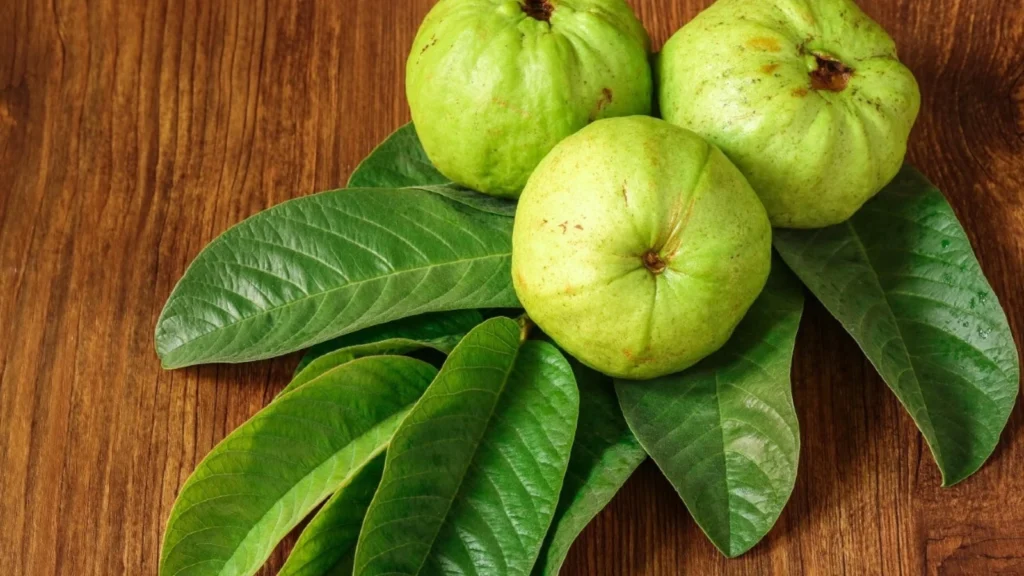
Commonly grown in tropical countries, guava is not only a delicious crop, but it is also an important medicinal plant that has many curative purposes [24].
Most of its biological activities can be attributed to its phenolics, flavonoids, and terpenoids, among others [24].
With its anti-inflammatory and antinociceptive properties, the leaves of guava can be used to relieve the pain and swelling caused by styes [24].
A 2010 study involving animal subjects confirms this, indicating its efficacy in both acute and chronic inflammation [25].
That’s not all, it also works as a strong antibacterial, preventing the growth and spread of Staphylococcus aureus and other bacterial strains [26, 27, 28].
The roots and bark of guava also can also inhibit the bacterial strain that causes styes [28].
To summarize, guava leaves can help you deal with stye in three ways: reduce pain, tone down swelling, and kill the microorganisms causing the infection.
How to use guava leaves for treating eye stye:
- Boil three cups of water in a pot.
- Add three guava leaves.
- Lower heat and simmer for 20 minutes.
- Remove from the stove.
- Allow water to cool a little.
- Soak a cloth in warm water.
- Apply on the affected eyelid for five minutes.
- Re-apply every three minutes until the water is no longer warm.
- Do this once a day for three to four days.
7. Aloe Vera
Known for its soothing, wound healing, and anti-inflammatory properties, aloe vera has always been the go-to remedy for various skin injuries such as burns, wounds, cuts, and scrapes [29].
This herbal remedy, which is described to be “as old as a civilization” has also long been used to treat many other health problems [30].
These include stomach ailments, constipation, ulcer, diabetes, and fungal infections [30].
For the inflammation of the eyelids, aloe vera can surely help.
Both the gel and leaves of this plant have been found to possess antibacterial activities against stye-causing Staphylococcus aureus [31].
Not only that, but topical application of the gel can also help speed up the healing of lesions and infections, according to a study that can be found in the Annals of Plastic Surgery Journal [32].
Aloe vera home remedy for eye stye:
- Cut an aloe vera leaf and extract the gel.
- Use a cotton tip to apply gel to the eyelid.
- Let it sit for 15 to 20 minutes before washing off with warm water.
- Use this procedure three times a day for five days.
RELATED: Aloe Vera Gel for Acne: 12 Sure-Fire Ways to Cure Acne
8. Chamomile
Did you know that chamomile has been used as traditional medicine since ancient times in Egypt, Rome, and Greece [33]?
Today, its popularity as a therapeutic agent has spread all over the world, particularly in Europe, Africa, Asia, and North and South America [33].
When it comes to easing the condition of stye, chamomile can be of use in several ways.
First, it works as an antiseptic, disinfecting the area of the swollen eyelid to make sure no dust or debris worsens the problem [33].
Second, it’s a strong antibacterial that can get to the bottom of the problem, killing and preventing the spread of Staphylococcus aureus, the same way it handles other pathogenic bacteria [34].
Third, it’s an anti-inflammatory that can help minimize the swelling in the eyelid [34].
Finally, it works as an analgesic, which means that if you are in pain, this can bring you the relief that you are looking for [35].
How to use chamomile for eye stye:
- Boil one tablespoon of chamomile flowers and thyme leaves each in a pot of water (three cups).
- Remove from heat.
- Let the concoction cool for a few minutes.
- Soak a cloth in the solution.
- Apply on top of the eyelids three times a day until swelling subsides.
RELATED: 14 Health Benefits of Chamomile Tea (Backed by Science)
9. Castor Oil
One of the remedies for stye recommended by Earth Clinic is castor oil. Castor oil is composed of almost 90 percent ricinoleic acid. Plus, it is a strong anti-inflammatory agent.
Indeed, this is how castor oil helps alleviate stye—by reducing inflammation. Therefore, if inflammation is reduced, then it gives relief from pain too.
A review of the pharmacological activities of castor oil confirms this, indicating that the extract of this plant can significantly reduce both acute and chronic inflammation in animal subjects [36].
The flavonoids in castor have been found to be the ones responsible for these actions [36].
Castor oil also has effective antibacterial activities against Staphylococcus aureus, so it can also destroy the source of infection [36].
As an antinociceptive, castor blocks pain signals in the brain to minimize the ease and discomfort caused by stye [37].
How to use castor oil for eye stye symptoms:
- Rinse affected eyelids with a mixture of five drops of baby shampoo and warm water.
- Gently press a warm towel on top of the eyelid for three to five minutes.
- Apply one teaspoon of castor oil to the external bump using a cotton tip.
- Do this twice a day for up to five days.
10. Potato
Surprised seeing this name? Yes, the potato is not only a favorite and essential ingredient while cooking. It can also be used to treat health problems. Potato can be one of the simplest home remedies for eye infections.
It is because potato has astringent and anti-inflammatory properties. These are suitable treatments for this condition, commonly called, stye. Using potatoes for such complications can prevent skin irritation as well as reduce pain and swelling.
The glycoalkaloids in potatoes have been observed to have anti-inflammatory effects, as reported in a 2013 study [38].
They work by inhibiting the production of nitric oxide and cytokines, the primary hallmarks of inflammation [38, 39].
Home remedy for eye stye using potato:
- Grate the potato.
- Wrap the potato in a clean cloth or cheesecloth.
- Put it on top of the painful area for 10 minutes.
- Follow this technique three times a day for four to five days.
11. Garlic Juice
Garlic is one of the herbal remedies you can’t do without.
It has been found effective in curing a vast array of health problems, including minor infections such as stye.
A 2009 study published in the Journal of Medicinal Plants Research reports that garlic has strong antibacterial effects against Staphylococcus aureus and many other strains of bacteria [40].
Allicin, its main compound, is said to be the source of most of its pharmacological properties [41].
Using garlic juice can surely help tone down the swelling and irritation of your eyelid. Just be careful not to get any garlic juice inside your eye.
How to use garlic for eye stye:
- Crush two cloves of garlic to extract the juice.
- Dilute garlic juice in water.
- Apply around the affected area.
- Do this every day for one to two weeks.
12. Baby Shampoo
There’s no scientific study that provides evidence for this particular stye remedy.
However, many people who have tried this can attest that it surely works by toning down the inflammation and soothing the irritation.
According to Healthline, using baby shampoo is one of the best and most effective ways to cure stye because it helps disinfect the area, and gets rid of infection-causing bacteria.
You can’t use a regular shampoo because if it gets into your eyes, it will cause a burning sensation.
Baby shampoo, on the other hand, is usually mild and has a “no-tears” formulation.
Recommended directions for using baby shampoo for eye stye relief:
- Add a little water to your baby shampoo.
- Use a cotton swab to wipe the eyelids with the shampoo and water mixture.
- Repeat the remedy every other day until the infection is gone.
13. Raw Honey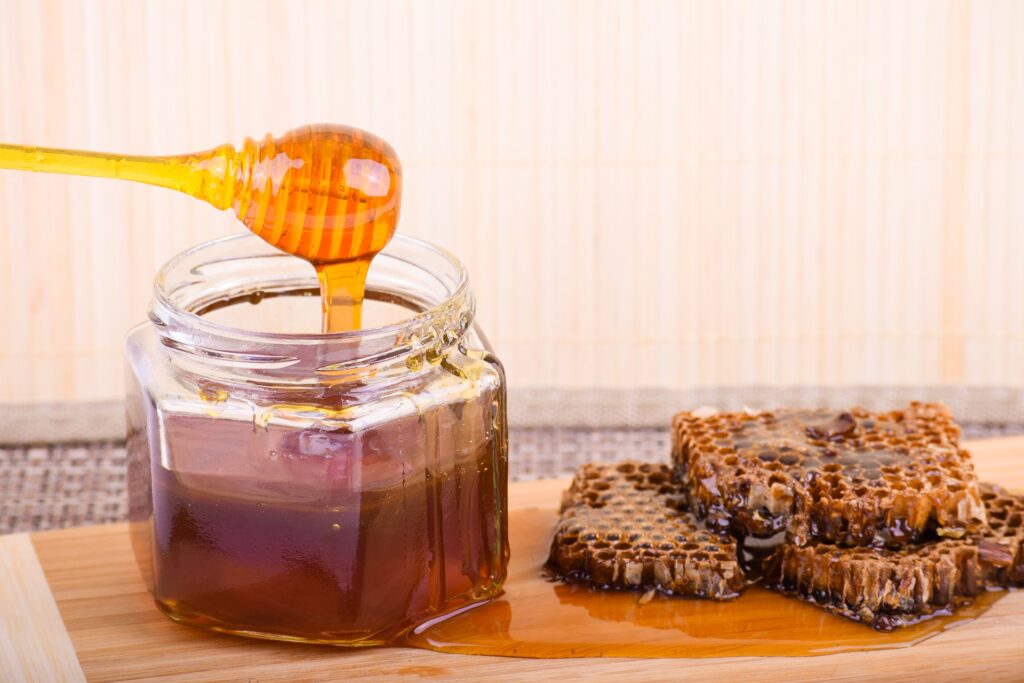
Honey is not just a natural sweetener. It is one of the most effective and easily accessible ingredients for home remedies.
Raw honey is the pure and unfiltered form of sweetener that comes from honeycombs.
Raw honey keeps intact many of the nutritional and therapeutic values as the processed ones.
Honey is rich in antimicrobial, anti-inflammatory, and antioxidants properties. These bioactive compounds can effectively fight against bacterial skin infections such as stye.
Moreover, honey is a natural emollient. Honey can bring back moisture to your skin. honey can soothe the irritations, itch, and other discomforts on the inflamed skin area. [42]
How to use honey for stye:
- Add three tablespoons of honey to two cups of warm water and mix thoroughly.
- Now, rinse your affected eye with the solution for some time.
- Repeat the process twice daily.
RELATED: 10 Health Benefits of Honey (Backed by Science)
14. Black Tea
Black tea is the most popular form of brewed tea made from the leaves of the Camellia sinensis plant.
Its legacy is 4000 years old and originated in China. It’s called black tea probably because of its dark amber color. [43]
If you want healthy skin; drinking black tea could be the right solution for you.
You’ll be surprised to know that this popular drink has some practical uses as well.
Black tea has great therapeutic values. It is full of antioxidants, anti-inflammatory, and antibacterial properties.
Researchers have confirmed that Catechins and flavonoids in tea are antimicrobial and can ward off skin infections such as stye. [44]
Tea can scavenge the activities of the free radicals and save your skin from possible infections.
It is to be noted that green tea is superior to black tea when it comes to preventing skin infections.
How to use black tea to get rid of eye stye:
- Soak a tea bag in the warm water for 1 minute.
- Now, lift it from the water and press the excess tea.
- Place the tea bag on your affected eye for a couple of minutes.
- Repeat the process several times.
- You can effectively stye within a week following this simple remedy.
15. Lavender Oil
Sweet and flower noted lavender oil comes from the flowers of the lavender plant.
Lavender plants are native to the Mediterranean and Northern Africa.
Lavender oil is one of the most well-known aromatic oils for a host of therapeutic benefits.
This herbal oil has a bountiful anti-inflammatory, bactericidal, antifungal, anti-anxiety, and antiseptic properties. [45]
People have been using this essential oil as a home remedy for various skin disorders for centuries.
Lavender oil can give instant ease to the skin irritations and itch caused by stye.
The oil is potent in warding off the Staphylococcus aureus bacteria in the quickest possible time. [46]
Lavender oil home remedy for eye stye:
- Pour a couple of drops of lavender oil on a cotton ball.
- Now apply it to the affected eyelid.
- Gently massage or tap it.
- Leave the oil on the eyelid and don’t wash it off.
- Repeat the simple treatment 3-4 times a day to get rid of a stye.
Note: Dilute lavender oil with coconut or any other carrier oil when you try this remedy for children.
16. Apple Cider Vinegar
Apple cider vinegar is a part of folk medicinal practice. People have been benefiting from using ACV as home remedies for a host of illnesses.
However, only in recent times, researchers have empirically confirmed the positive effects of ACV on human health.
ACV is a potent combination of fermented apple must or alcohol and acetic acid.
It has a long list of health-promoting probiotics, enzymes, antimicrobial, anti-inflammatory, and antiseptic properties.
ACV can effectively regulate blood sugar, reduce blood pressure, high cholesterol, digestive disorders, obesity, and enhance skin health.
The acetic acid in ACV has many good implications for your skin health.
It can fight skin infections such as stye, lower skin pigmentation, lighten skin scars, etc.
The low pH level of ACP is perfect for lowering the swelling and other symptoms of stye. [47, 48]
How to use ACV for treating eye stye:
- Pour two teaspoons of ACV into a cup of warm water and mix well.
- Now soak a cotton ball in the mixture.
- Apply the ACV-soaked cotton ball to the stye-affected eyelids. Place it in the place for 2-3 minutes.
- Repeat the process twice daily for a quick recovery from the infection.
RELATED: Top 10 Benefits of Apple Cider Vinegar for the Skin
17. Coconut oil
Coconut oil is probably the most popular hair and skincare product in South East Asia.
Coconut oil is extracted from the meat or kernel of the giant nut- coconut.
It is an essential oil with versatile practical and health benefits. The oil comprises 90% saturated fat. But coconut oil fat is not harmful to your body.
This fat is different from the animal-based fat such as; butter, lard, red meat, etc.
Our body doesn’t have an inflammatory response to this oil. [49]
Coconut oil is full of natural antimicrobial, fungicidal, antioxidant, and antibacterial properties.
It also contains lauric acid, vitamins E and K, and healthy nutrients. These potent components make coconut oil an effective home remedy for stye. [50, 51]
How to use coconut oil for relieving eye stye:
- To begin with rinse your stye-infected eyelids.
- Heat a teaspoon of coconut oil and soak the cotton bud in it.
- Now apply the oil to the infected area.
- Repeat the simple treatment multiple times a day.
RELATED: Treat Eczema Naturally with Coconut Oil: 6 Simple Ways to Try Now
18. Bitter Gourd
Bitter gourd or Momordica charantia is a tropical edible vine-like plant belonging to the Cucurbitaceae plant family. The bitter edible fruit and leaves of the vine are eaten as vegetables. Bitter gourd is very famous in Asia, Africa, and the Caribbean regions.
You may dislike the acute bitter taste of the vegetable but it has exceptional health benefits. Some of the recent research on bitter gourd have come up with fascinating facts. Bitter gourd is evidently a natural cure for cancer, gout, asthma, diabetes, etc.
The green vegetable is a natural detoxicant. Bitter gourd helps to cleanse the blood of harmful toxins. A topical application of the vegetable has antibacterial and purifying effects on skin disorders such as stye infection.
Bitter gourd home remedy to get rid of eye stye:
- Chop bitter gourd and make some random slices.
- Apply a slice right over the stye inflammation.
- You can smash bitter gourd and apply it to the stye as a paste.
- Wash it off after 20 minutes of application.
- Additionally, you can brew the gourd in some water and make some tea out of it.
- Consume the bitter tea on an empty stomach to boost your immune defense and internal purification.
- Repeat the topical application thrice daily to get rid of a stye.
19. Epsom Salt
Epsom salt comes from the saline spring of a place called Epsom in Surrey, England. For a very long time, people have been using this salt for rejuvenating baths. Epsom salt bath provides relaxation of the body and mind.
Epsom salt penetrates the skin fast and detoxifies, relieves the pain in the muscles, and cleanses the body inside out. The strong astringent, antimicrobial, and anti-inflammatory properties in Epsom salt are beneficial to treating stye infection naturally.
How to use Epsom salt for eye stye relief:
- Dissolve one teaspoon of Epsom salt in a cup of warm water
- Soak a fresh washcloth in the salt solution, wring it out, and apply it to the stye-affected eye.
- Let the solution work on the infection for 10-15 minutes.
- Repeat the simple treatment thrice daily to get rid of a stye fast.
When to Consult an Eye Doctor?
You can try the above home remedy for stye. However, if your condition still does not improve then you should really go and see an ophthalmologist. Such conditions will prompt you to visit the doctor straight away:
- If you are running a fever, and feel a chill or shivering. Also, if you have muscle pain.
- Your eyesight is not fine. It is more than just seeing a little blur.
- You see flashes of light. Or you see floaters in front of your eyes.
- Home remedy is not helping.
- The redness and swelling of the stye have extended to your cheek, forehead, and nose.
OTC Ointment for Stye
Many over-the-counter eye stye ointments may provide quick relief from the symptoms of the condition.
Moreover, there are homeopathic ointments and eye drops for treating eye stye. It is recommended that you follow proper directions for applying the ointment to the eye.
Anecdotal evidence suggests that topical steroids may cause some side effects. So it’s better to avoid using topical steroids.
Bottom Line
Something as small as a stye can make you feel extremely uncomfortable.
A stye is not contagious. Stye for some people happens once in their lifetime. While others, get a recurrent stye in their eyes.
So for either party, preventing style is important. It can be done if you keep your eyelids warm. You can either use a warm compress on a consistent basis to do this.
You have to maintain a routine and follow proper eyelid hygiene. You clean the makeup from your eyes, every night before going to sleep.
You may quickly relieve some of the symptoms of a stye at home using the home remedies discussed here. If the condition recurs and worsens, visit a doctor immediately.
READ MORE: 13 Essential Oils for Rosacea that You Should Use
